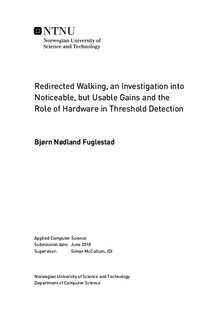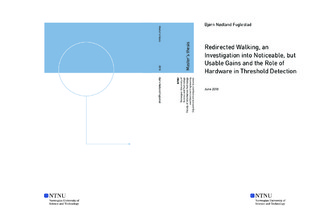| dc.description.abstract | Redirected Walking uses rotation, translation and curvature gains to manipulate users of VR environments. This paper presents a new detection threshold for rotation, translation and curvature gain for the HTC Vive. The calculated rotation gain was 13\% increased and 21\% decreased rotation. For translation gain, 19\% increased and 5\% decreased movement. The detection threshold for curvature gain was a circle with a radius of less than 22m. When comparing these results to previous studies, which used hardware with lower resolution, frame rate and FOV, the results indicate that it is easier to detect two type of gain, increased rotation and decreased translation gain in the HTC Vive. Further I investigate if there is a range of gains that is noticeable, but is still comfortable for the user. The results indicate that for most, there are detectable gains that are still comfortable when noticeable. Though how great the difference in gain is between noticeable and uncomfortable is extremely dependant on the person's sensitivity to the given gain. | |

